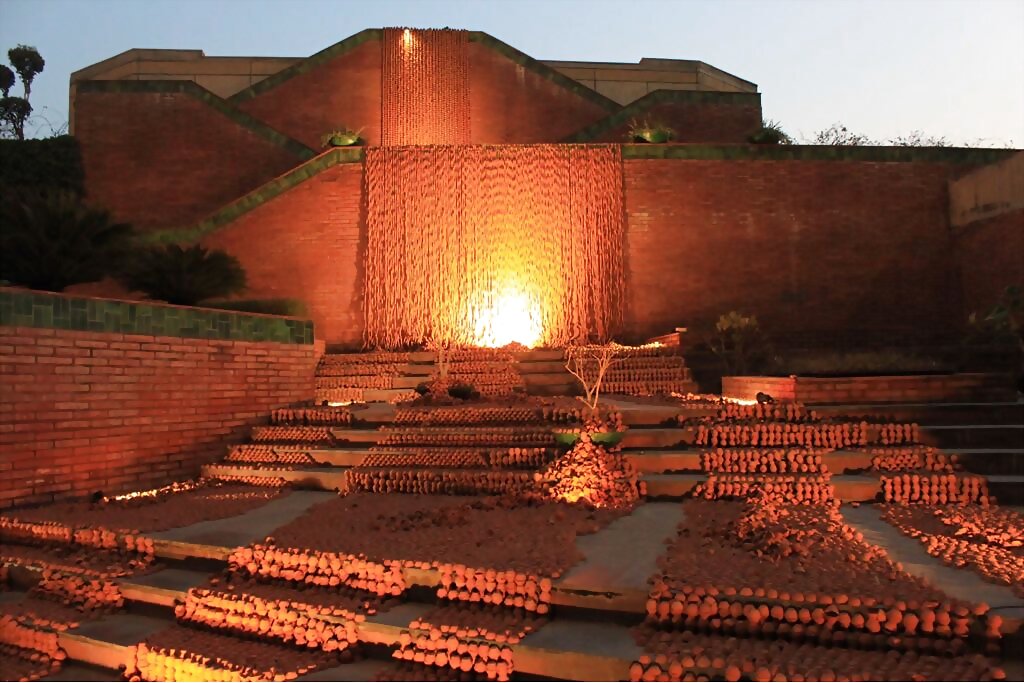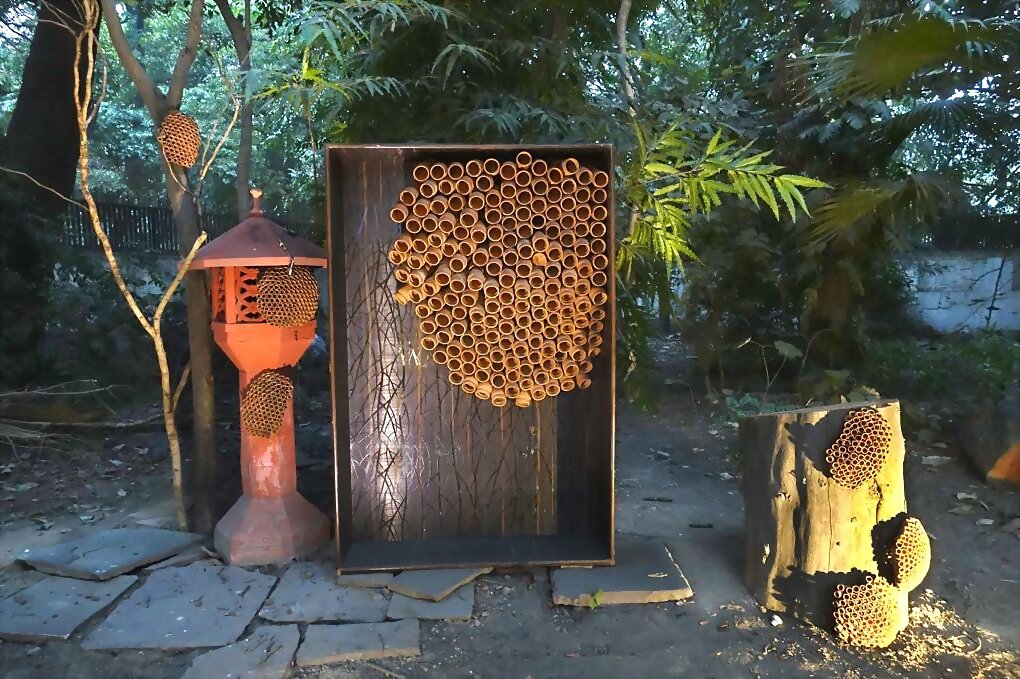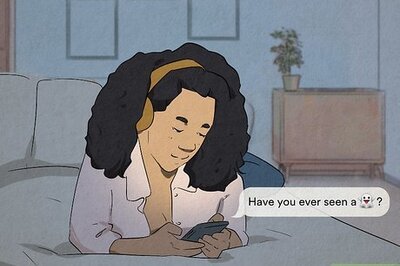
views
Manav Gupta, a Delhi-based artist, has been using different art forms -- installations, poems, paintings, murals as well as PSA videos -- to talk about environmental issues for more than two decades now.
The artist's claim to fame may have been a five floor high mega mural that has set a world record, but, what makes Gupta's work unique is his capacity to amalgamate poetry, art, music and several other forms to deliver a profound soul-stirring message on climate change issues.
Gupta's climate change arts aren't a form of activism for him, but an in-depth inquiry, a thorough investigation of nature. "Nature's process of creation, as it exists in its timelessness, in its oneness and peace, has all the answers to man's need of growth, progress and development," said the artist.
"If human endeavors first absorb and then adopt these answers in its developmental process, the growth from cities to mega cities and path to progress would not create silent self-digging graves of human extinction," he added.
Gupta, however, is well aware that the 'silent self-digging graves of human extinction' he mentions seldom draws public attention, which is why, he is determined to take the movement on climate change to the general public through simple yet unique art that is displayed in public space.
The world needs more public art that can influence people, said the artist. Gupta believes that there is a need to think from the heart, rise up and have an overview, take a higher stand. “It’s not an elitist, intellectual, superior pedestal with a language that half the world doesn't understand. It’s in the delivery of simplicity with elegance that one can create a consciousness," said Gupta.
"Because I have always strongly believed that we can never underestimate the intelligence of masses. As an artist I dwell on their intelligence. That's where possibilities of big change exists," he added.

The Ganga waterfront at the India Habitat Centre.
So far, Gupta has shown great persistence in trying to involve the public in the discourse on climate change through his work. In little more than 20 years, Gupta has built up a vast catalog of art projects on environment. Gupta started in 1997, when climate change was hardly a topic artists chose to work on.
Titled 'on my eyot' his second solo exhibition had 108 contemporary miniature paintings on rain forests and the five elements of Nature. In 2001, at the Roosevelt House, US Embassy, Gupta displayed his works 'Rain forests and the Timeless Metaphors of Dreams' and the 'Umbilical cords of earth" series. “It connected people from the west and diverse backgrounds to environment consciousness message that I was communicating through his art," he said.
Gupta's first major collaborative book project ‘SPARKS' was published in 2002.He also created Haiku poems for that book. This is one of the distinctive style of Gupta, he uses various forms of art together -- poetry with painting for example -- to create awareness about climate change. He did the same in his one-minute long PSA videos on climate change that were commissioned by the Ministry of Environment & Forest. Unlike most PSA videos which are generally preachy message-oriented storytelling, Gupta's videos are surreal fusion of poetry, music, design and animation that has a moving effect.
You can watch it here:
Gupta's public arts on climate change is extensive. In 2003, as a genesis of his Public Art Projects, Gupta started 'Plant a sapling on my canvas' project where he invited people from all walks of life to collaborate with him on the canvas.
In 2009, his project Beyond Politics, Beyond Copenhagen, For Our Children consisted of a treatise, a travelling trilogy of art, as well as lectures and films on Sustainable development.
However, in 2013 his most significant work on climate change, ‘Excavations in Hymns of Clay’ began. "In 2013 extending my practice in painting, I adopted clay as an extensive medium for my installations for Museums, private space and most importantly gigantic versions at public spaces towards raising environment consciousness," said the artist.
"I chose clay because we are all clay. Dust to dust," he added.
“I inverted a Diya (earthen lamp) used it as a metaphor of a drop of water. The power of the message that it generated was heartwarming. People came and sat beside my river in South Africa within the walls of the National Museum and with their hands on chin, sat for hours absorbing the message while they soaked in the tranquility of the medium," said the artist.

The beehive project.
Gupta had also done the 'River Waterfront' project where he deployed pottery to connect rivers, waters and the people of the world. Another significant project by Gupta in which he used earthen lamps is the Yamuna Project that was displayed at a big mall (DLF mall) in Delhi. Gupta interspersed different installations like the Waterfront, the Beehives Garden, the Noah's Ark, the Time Machine and the Bed of Love as site specific engagements of sustainable solutions amidst stores that sold premium global brands.
Whether it is the Time Machine, Bee-hive Garden, River Bed of Love, or the Noah’s Ark, the artist, through all these installations wanted to convey the fragility of clay juxtaposed with the limitedness of life. Gupta used these installations as metaphors to outline the rapidly mechanized and constructed consumerist world and its interaction with earth’s resources."
“I make it simple - 'Keep it simple' is my mantra... Simple CAN be intriguing and have mystique," said Gupta. The artist said he finds greatest satisfaction when everyone can relate to his art. That is his driving force.
“My art contains enquiry within it, probing hitherto untouched elements of thought," he said. Activism or concern for climate change need not be all noise or loud or ugly. Quiet can be as penetrating if not more.
At a time when world leaders are still denying climate change, it is not only important for scientists to remind people of the magnitude of threat that looms on entire humanity but also for writers, painters, dancing and musicians to help people understand this threat, and provoke them to take actions. They are painting the picture that hits hard.
#ClimateArt is our series to discover how art, music and literature have the potential of changing opinions and beliefs about climate change.




















Comments
0 comment